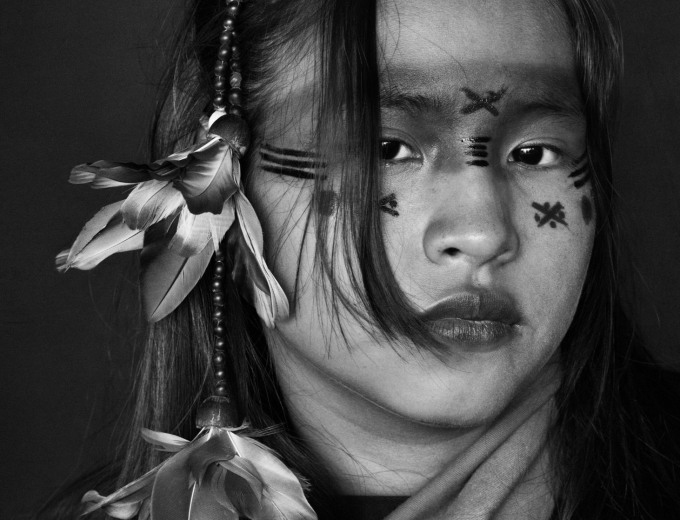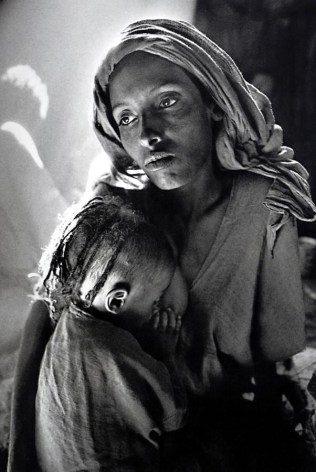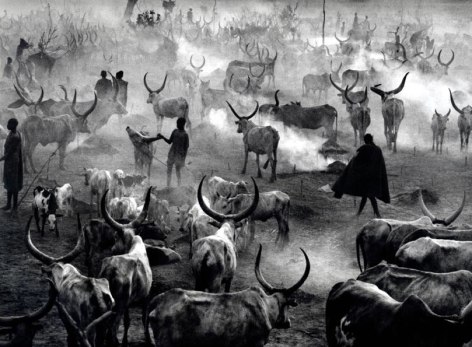
Sebastião Salgado, one of the world’s most respected photographers, is to have his first solo exhibition in Hong Kong. Salgado has made it his life’s work to document the impact of globalization on humankind. His hauntingly beautiful black-and-white prints lay bare some of the bleakest moments of modern history. His images tell the story of Vietnamese boat people, Rwandan refugees, Indian coffee growers, and countless other impoverished individuals. This unprecedented exhibition unveils new work from his Genesis series, featuring images of majestic landscapes and ancient civilizations. A selection of iconic works from earlier in his career will also be on view.
In the past three decades, Salgado has travelled to more than 100 countries for his photographic projects. Breaking down barriers, he lives with his subjects for weeks, immersing himself in their environments. He sees himself as a participant entering their story. Salgado describes this approach as photographing from inside the circle. Each of his images is infused with empathy and respect for his subjects. Within a single frame, he captures the fragility and the fortitude of the human spirit.
The intensity of Salgado’s process is unparalleled. He devotes years to each series to grasp the full scope of his topic. His Migrations series, for instance, spanned 1993 to 1999. Salgado’s subjects were refugees and peasants. Among his most renowned works is Church Gate Station, Western Railroad Line, Bombay, India, 1995, picturing surging crowds of commuters and migrants flowing in and out of the Indian railway terminal.
Throughout his career, Salgado has worked primarily with a 35mm Leica camera shooting in sharp-contrast black and white. Oftentimes, Salgado backlights his subjects and allows streams of natural light to filter through his compositions. The resulting texture softens his subject matter and contributes to the veracity of his images. In 2004, Salgado began using a 645 medium-format camera for his series Genesis, which chronicles landscapes, wildlife, and communities living in accordance with their ancient traditions.
Sahara, Algeria, 2009, is a recent work from Genesis. Salgado managed to follow a lone devotee who journeyed into the sand dunes to pray. “We have lost touch with the essence of life on earth,” Salgado says. “I conceive this project as a potential path towards humanity’s rediscovery of itself in nature.” Other images from the same series include landscapes of surreal icebergs drifting in Antarctica and portraits of the isolated Zo’é tribe in Brazil. Salgado’s greatest strength lies in his ability to capture such remote realities.
Sebastião Salgado is Brazilian-born and based in Paris. He was born in Aimorés, in the state of Minas Gerais, in 1944. It was a period of upheaval and change. The country was swept by urbanization and close to 80 percent of the population left the fields and poured into the cities. In 1963, Salgado moved to São Paulo and trained as an economist. It was not until the early 1970s, after his wife loaned him a camera, that he embarked on a career as a photographer, eventually relocating to Paris. Salgado says given his childhood and background in economics that it was only natural that he become a photographer gravitating toward humanistic themes.
Salgado has had numerous exhibitions in influential museums across the globe. Among his many honors, Salgado has been named a UNICEF Goodwill Ambassador and an honorary member of the Academy of the Arts and Sciences in the United States. Since the 1990s Salgado and his wife, Lélia Wanick Salgado, have been restoring a 676-hectare portion of the Atlantic Forest in Brazil. In 1998 they founded the non-profit Instituto Terra, an organization focused on reforestation and environmental education.

![Sahara, Algeria [man praying] © Sebastião Salgado/Amazonas Images, 2009](https://img.artlogic.net/w_472,h_472,c_limit/exhibit-e/575562f5cfaf34762c8b4568/d566f6d178cb68b1105948bced7b7c4e.jpg)

![Arizona, USA [grand canyon] © Sebastião Salgado/Amazonas Images, 2010](https://img.artlogic.net/w_472,h_472,c_limit/exhibit-e/575562f5cfaf34762c8b4568/89ba86d3b4c57924dd544ec4b4ff8c83.jpg)

![Boys fleeing from southern Sudan [refugee camp] © Sebastião Salgado/Amazonas Images, 1993](https://img.artlogic.net/w_472,h_472,c_limit/exhibit-e/575562f5cfaf34762c8b4568/74d3118c6d4e5f9d71e23144696e3a54.jpg)
![Kafue National Park, Zambia [buffalos] © Sebastião Salgado/Amazonas Images, 2010](https://img.artlogic.net/w_472,h_472,c_limit/exhibit-e/575562f5cfaf34762c8b4568/fd0df94328988dd7af9bef5d566dd20b.jpg)
![Bushmen, Botswana [Bird Man], Africa © Sebastião Salgado/Amazonas Images, 2008](https://img.artlogic.net/w_472,h_472,c_limit/exhibit-e/575562f5cfaf34762c8b4568/6923361865d7780a1af8ece57858cc82.jpg)
![Woman's head with flowers in her hair, India [coffee plantation] © Sebastião Salgado/Amazonas Images, 2003](https://img.artlogic.net/w_472,h_472,c_limit/exhibit-e/575562f5cfaf34762c8b4568/c68b5f42a5163d6abaebf965886ec3e5.jpg)



















